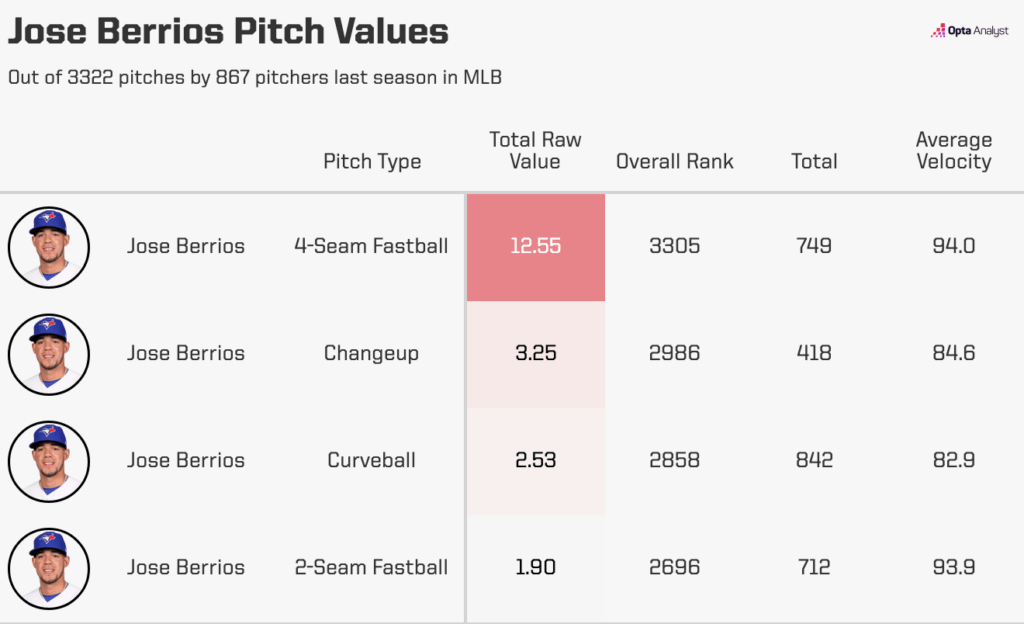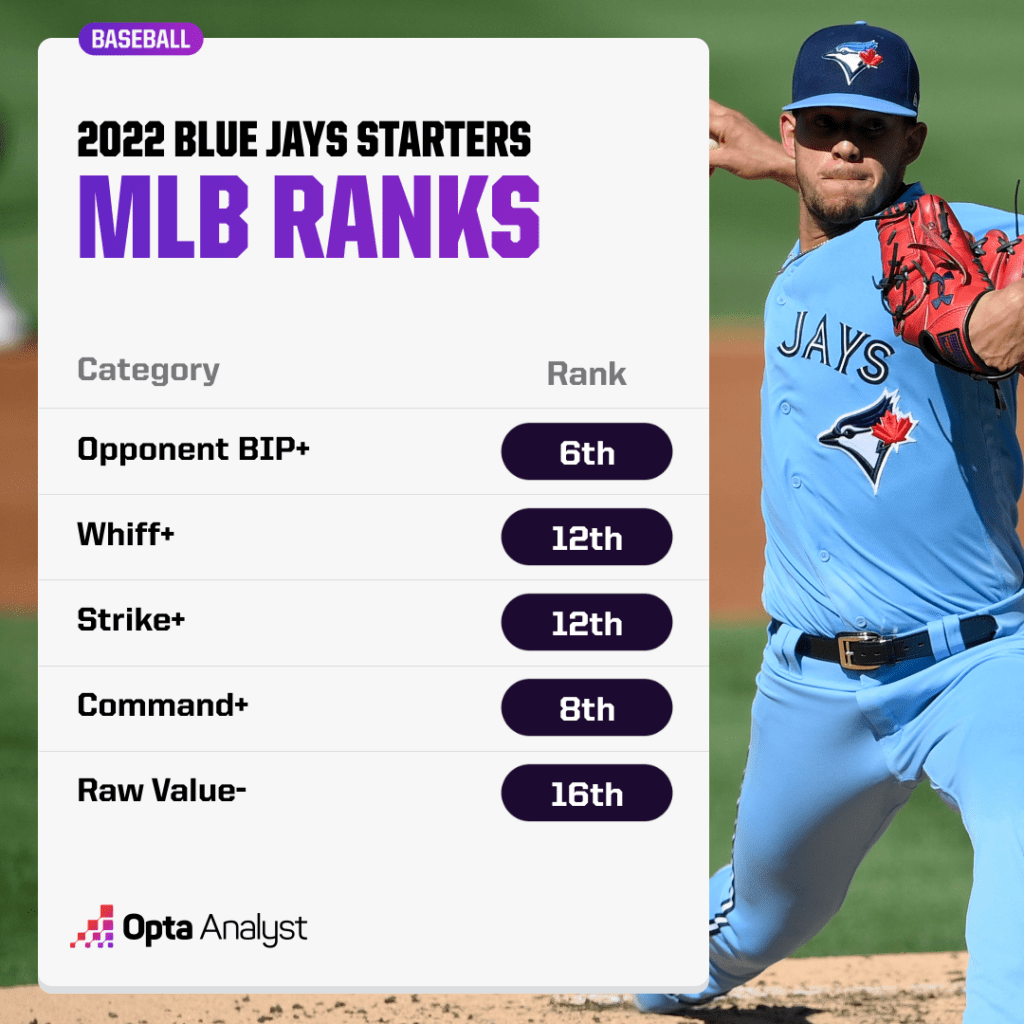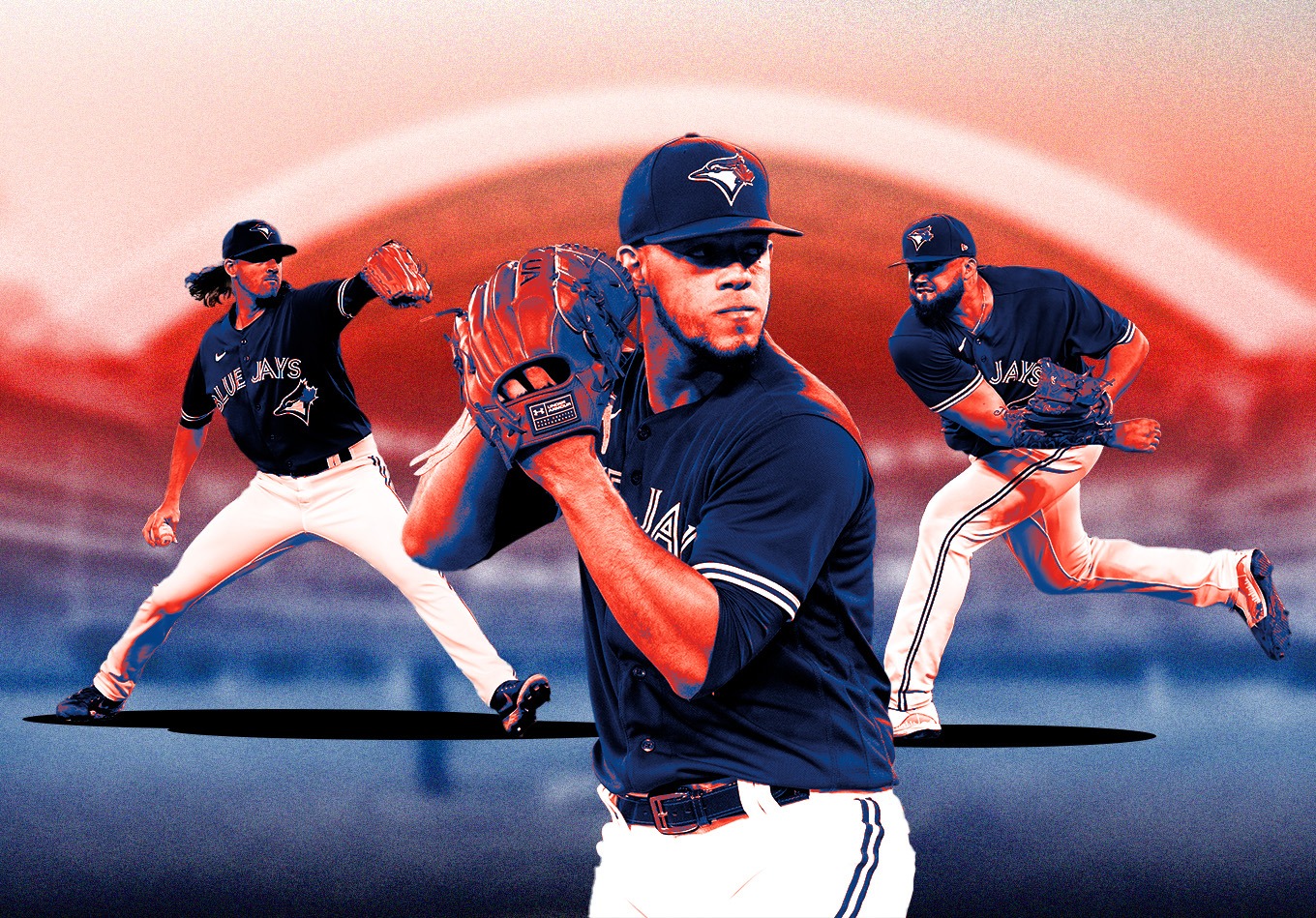Toronto Blue Jays star José Berríos threw as hard ever in 2022. His trademark curveball still missed bats and earned good results for the most part. His 5.23 ERA, however, was the worst of his career apart from a short cameo in 2016 when he was a rookie.
After that ugly 8.02 ERA in 58.1 innings as a first-year player, Berríos had settled as a mid-3.00s ERA pitcher both in Minnesota and Toronto. He isn’t an ace, but he’s certainly a good No. 2 with the ability to pitch at least 180 innings per season.
The 2022 campaign was a nightmare for him, though. He was extremely hittable, allowing 10.41 hits per nine innings after just 7.45 in 2021 and 8.55 for his career. He conceded a career-high 29 home runs and his strikeout rate collapsed to 19.8% – the first time since 2016 that it was under 20%.
What happened?
He spoke about the mental aspect of handling struggles and mechanics, so the problem was twofold. To solve the latter, he has been in Dunedin since January, way earlier than his typical schedule, “working to stay aligned, push harder with his back leg and avoid flying open too early with his front side” per MLB.com beat writer Keegan Mathieson.
The mental part of it is just as important, though.
“When things don’t go the way you want, you start doubting yourself and giving credit to the hitter. That can’t happen in the game. Between the lines, you have to believe in yourself and compete 100%. That’s the No. 1 thing I learned last year,” he told Mathieson.
It seems that for Berríos, it’s a matter of regaining confidence.
“I’ll just believe in myself. I’m José Berríos. I’m here because I’ve done a lot of good things out there. I have to believe in that,” he explained.
The main problem seemed to be a highly ineffective four-seam fastball. The second-most used pitch (27.5%) in his repertoire ended up with a total raw value (RV) of 12.6. And when it comes to total RV, lower is better. So 12.6 is very, very bad. In fact, Berrios’ four-seamer was 11th least valuable in its pitch type and the 18th worst overall.
In comparison, Dylan Cease’s slider totaled the most raw value of any pitch in MLB at minus-33.0.

Raw value helps us assess a pitcher’s performance on a per-pitch basis, instead of just looking at the result of an at-bat. This allows us to know how good a pitcher is at the various aspects of his craft: hitting his spots, missing bats, earning called strikes, avoiding hard contact, and more.
Total RV is the sum of all parts when it comes to pitching, the “parts” being every offering that comes off the pitcher’s hand. Every whiff, every middle-middle pitch, every foul… matters.
RV- is the rate version of the metric, and for pitching, fewer is better. It helps evaluate a pitcher’s performance relative to league average (100).
Berríos posted a 122 RV-, or 22% worse than the league average. The four-seam fastball, in particular, was a problem with a 151 RV- and a 169 BIP+, which measures how much damage a hitter inflicts after making contact. In this case, the damage a pitcher allows.
So Berríos’ four-seamer was 69% worse than the league average when it comes to quality of contact. This needs to be said, too: Berríos also had a bit of bad luck. He conceded some homers on pitches that didn’t look bad at all, like these:
The Blue Jays are hopeful that working on his mechanics and getting that swagger back can help him return to form.
His velocity was pretty much unchanged in comparison to past seasons, which leaves one to wonder whether command was the main culprit of his struggles. But that doesn’t seem to be the case either. After ranging between 105-111 (all above league average) in command+ on his four pitches in 2020, Berríos ended up between 108-117 in 2021 and 107-119 last season.
No, Berríos just wasn’t missing as many bats in 2022. His curveball and four-seam fastball each had a 111 whiff+ in 2021, but those dipped to a 104 and league-average 100, respectively, last season. And opposing batters’ BIP+ jumped from 147 to 152 on the curve and 140 to 169 on the four-seamer.
It might be a good starting point for Berríos to implement his changeup even more. Though it only had an 83 whiff+ in 2022, the offspeed pitch has only allowed a 69 and 78 BIP+ in the last two seasons. He upped his usage of the changeup from 13.2% in 2021 to 15.4% last season, while dropping the two-seam fastball usage from 29.2% to 26.2%. Berríos only generated a 67 whiff+ on the two-seamer last season when it surrendered a 123 BIP+.
If the 28-year-old Berríos can find a way to bounce back, Toronto’s rotation can be extremely good.
The emergence of Alek Manoah (2.24 ERA, 180 punchouts) as an ace and AL Cy Young finalist and the steady presence of Kevin Gausman (3.35 ERA, 205 strikeouts) give the staff a couple of elite frontline starters. Manoah and Gausman finished 12th (-21.4) and 19th (15.6), respectively, in total RV- in 2022 and feature two of the most valuable pitches in baseball.
The Blue Jays also signed Chris Bassitt, a rock-solid middle-of-the-rotation right-hander who finished 24th in total RV- (-6.8), to a multi-year contract.

If Berríos can show his real version, this unit will have four top pitchers. Yusei Kikuchi and Mitch White will compete for the fifth starter gig in spring training, and both of them carry substantial potential.
There are wild cards, too, and that’s what makes this staff so exciting. 2021 draftee Ricky Tiedemann compiled a strong 2.17 ERA, a 0.86 WHIP and a 117/29 K/BB ratio across 78.2 innings (18 starts) last season in three minor-league stops. He is one of the game’s top pitching prospects and will probably start the season in Double-A. From there, all it takes is three or four months of dominance to become part of the big league picture.
The Jays also have Hyun-Jin Ryu, who is currently rehabbing from Tommy John surgery. He is reportedly targeting a July return, and while he has regressed in recent seasons, he owns a career 3.27 ERA and 1.18 WHIP. As a fifth starter, those numbers will do.
Of course, we also have the incredibly talented, yet frustratingly injury-prone Nate Pearson. He appears to be ticketed for a career in the bullpen, which is not necessarily a bad thing if it will help keep him healthy. If the Jays decide to give him another chance as a starter, though, he still has some very appealing upside.
Toronto has options. A lot of them.
But it’s very likely everything will depend on Berríos. If his slump is extended throughout 2023, Toronto’s rotation will be good, but not great. If he returns to his glory days, however, this unit can be a top-five one pretty easily.
